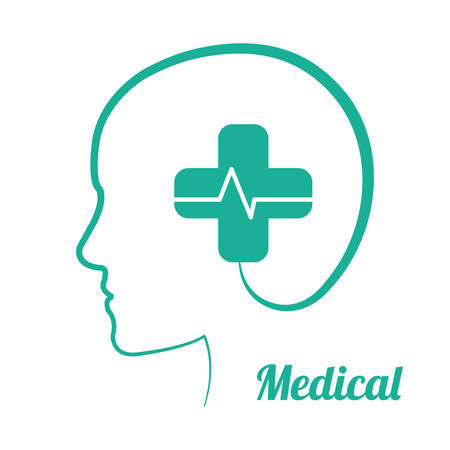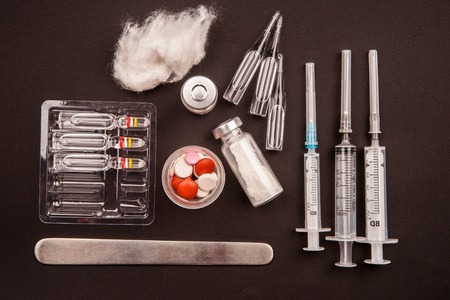1. Understanding the Causes of Hair Loss
Hair loss can be a frustrating and stressful experience, but understanding the root causes can help you find the right solution. There are several common reasons why people lose their hair, ranging from genetics to lifestyle choices.
Genetics: The Most Common Factor
If your parents or grandparents experienced hair loss, there’s a good chance you might too. Androgenetic alopecia, also known as male or female pattern baldness, is a hereditary condition that affects millions of people.
Hormonal Changes and Medical Conditions
Hormones play a crucial role in hair health. Fluctuations due to pregnancy, menopause, thyroid disorders, or conditions like polycystic ovary syndrome (PCOS) can lead to excessive shedding or thinning.
Lifestyle Factors That Contribute to Hair Loss
Your daily habits can significantly impact hair growth. Stress, poor diet, lack of sleep, and excessive use of heat styling tools or harsh chemicals can weaken hair follicles over time.
Common Causes of Hair Loss
| Cause | Description |
|---|---|
| Genetics | Inherited from family; leads to pattern baldness. |
| Hormonal Changes | Pregnancy, menopause, thyroid disorders affect hair growth. |
| Poor Diet | Lack of essential nutrients weakens hair follicles. |
| Stress | Triggers excessive shedding through hormonal imbalances. |
| Harsh Hair Treatments | Chemicals and heat damage hair structure over time. |
Identifying Your Specific Cause
The first step in finding an effective and affordable hair loss solution is identifying what’s causing it. If youre unsure, consulting a dermatologist or healthcare provider can help determine the best course of action for your specific situation.
2. Over-the-Counter Treatments That Deliver Results
If youre looking for effective hair loss solutions without breaking the bank, over-the-counter (OTC) treatments can be a great option. These products are widely available, easy to use, and have been scientifically proven to help promote hair growth.
Minoxidil: A Tried-and-True Hair Growth Solution
Minoxidil is one of the most popular and well-researched OTC treatments for hair loss. Available in liquid or foam form, this topical solution works by stimulating hair follicles and extending the growth phase of your hair cycle.
How Minoxidil Works
- Increases blood flow to hair follicles
- Extends the anagen (growth) phase of hair
- Helps thicken existing hair strands
Things to Keep in Mind
- Requires consistent use for best results
- May take 3-6 months to see noticeable improvements
- Mild side effects like scalp irritation may occur
Caffeine-Infused Shampoos: Boosting Hair Growth Naturally
Caffeine isnt just for your morning coffee—it can also help stimulate hair growth when applied topically. Caffeine-infused shampoos work by energizing hair follicles and reducing the effects of DHT, a hormone linked to hair loss.
Benefits of Caffeine Shampoos
- Improves scalp circulation
- Strengthens hair roots
- Easily integrates into your daily routine
Comparing OTC Hair Loss Treatments
| Treatment | Main Benefit | Time to See Results | Potenial Side Effects |
|---|---|---|---|
| Minoxidil (Foam/Liquid) | Stimulates hair follicles and extends growth phase | 3-6 months | Mild scalp irritation, shedding during early use |
| Caffeine-Infused Shampoo | Energizes follicles and reduces DHT effects | A few weeks to months | Mild dryness if overused |
The Key to Success: Consistency and Patience
No matter which OTC treatment you choose, consistency is crucial. Hair regrowth takes time, so using these products regularly as directed will give you the best chance of seeing results.

3. Nutritional and Lifestyle Changes for Healthier Hair
Taking care of your hair starts from within. The right nutrients, stress management, and proper scalp care can play a crucial role in preventing hair loss and promoting regrowth. Simple changes to your daily habits can make a big difference in your hair’s health.
Essential Nutrients for Stronger Hair
Your diet plays a major role in hair growth. A lack of essential vitamins and minerals can lead to thinning and hair loss. Here are some key nutrients that support healthy hair:
| Nutrient | Benefits for Hair | Food Sources |
|---|---|---|
| Biotin (Vitamin B7) | Strengthens hair and promotes growth | Eggs, nuts, whole grains |
| Iron | Aids oxygen delivery to hair follicles | Spinach, red meat, lentils |
| Zinc | Supports scalp health and reduces shedding | Pumpkin seeds, chickpeas, beef |
| Omega-3 Fatty Acids | Nourishes hair follicles and prevents dryness | Salmon, flaxseeds, walnuts |
| Vitamin D | Energizes hair follicles for new growth | Mushrooms, fortified dairy, sunlight exposure |
| Protein | The building block of strong hair strands | Poultry, fish, beans, dairy products |
The Impact of Stress on Hair Loss
If you’ve ever noticed increased shedding during stressful times, you’re not alone. High stress levels can trigger conditions like telogen effluvium, which pushes hair follicles into a resting phase, causing excessive shedding.
Simple Ways to Reduce Stress:
- Meditation & Deep Breathing: Helps calm the nervous system.
- Adequate Sleep: Restful sleep supports overall body functions, including hair growth.
- Dedicating Time for Relaxation: Engaging in hobbies or activities you enjoy can lower stress levels.
- Mild Exercise: Activities like yoga or walking improve blood circulation to the scalp.
- Avoiding Overworking: Taking breaks and managing workload helps prevent burnout.
The Importance of Scalp Care
A healthy scalp is essential for strong hair growth. Neglecting scalp care can lead to clogged follicles, dandruff, and inflammation—factors that contribute to hair loss.
Tips for Better Scalp Health:
- Avoid Harsh Shampoos: Choose sulfate-free shampoos that won’t strip natural oils.
- Mild Scalp Massages: Gently massaging your scalp with natural oils like coconut or castor oil can improve circulation.
- Keeps Your Scalp Clean: Wash your hair regularly but avoid overwashing to prevent dryness.
- Avoid Excessive Heat Styling: Heat damages both the scalp and hair strands over time.
- Treat Dandruff Immediately:
- If you have dandruff or an itchy scalp, use anti-dandruff shampoos with ingredients like ketoconazole or zinc pyrithione.
- You can also try home remedies like tea tree oil diluted in carrier oil.
A Holistic Approach to Hair Growth
Nutritional choices, stress management techniques, and proper scalp care all work together to create the ideal environment for healthier hair. While results may take time, these affordable lifestyle changes will help prevent further thinning and promote natural regrowth over time.
4. Affordable Prescription Options to Consider
When it comes to hair loss treatments, prescription options can be highly effective without breaking the bank. Some medications are FDA-approved and have been scientifically proven to slow down hair loss while promoting regrowth. If youre looking for a budget-friendly yet powerful solution, here are some prescription treatments worth considering.
Finasteride: A Cost-Effective Hair Loss Medication
Finasteride is one of the most well-known prescription treatments for male pattern baldness. It works by blocking the hormone DHT (dihydrotestosterone), which is responsible for hair follicle shrinkage. By reducing DHT levels, finasteride helps slow hair loss and even stimulates regrowth in some cases.
How Finasteride Works
- DHT Reduction: Lowers levels of DHT, preventing further hair follicle shrinkage.
- Slows Hair Loss: Helps maintain existing hair by stopping excessive shedding.
- Stimulates Regrowth: Can encourage new hair growth, particularly in the crown area.
Cost Comparison of Finasteride
| Brand Name | Generic Option | Average Monthly Cost |
|---|---|---|
| Propecia (Brand Name) | No | $70 – $90 |
| Finasteride (Generic) | Yes | $10 – $30 |
Minoxidil + Finasteride Combination Therapy
If youre looking for an even more effective approach, combining finasteride with minoxidil can enhance results. Minoxidil increases blood flow to the scalp and extends the hair growth phase, while finasteride prevents further hair loss by blocking DHT.
The Benefits of Combination Therapy
- Dual Action: Addresses both hair follicle shrinkage and insufficient blood circulation.
- Higher Success Rate: Many users experience better regrowth results when using both treatments together.
- Covers More Areas: Minoxidil is effective for receding hairlines, while finasteride works best on the crown.
If youre considering prescription treatments for hair loss but want to keep costs low, opting for generic finasteride or combining it with minoxidil can be a smart choice. Always consult a healthcare professional before starting any medication to ensure its right for you.
5. Low-Cost Natural Remedies and DIY Treatments
Hair loss can be frustrating, but you don’t have to spend a fortune on treatments. There are plenty of natural remedies and DIY solutions that can help improve hair thickness without hurting your wallet. From essential oils to scalp massages, these cost-effective methods may support healthier hair growth.
Essential Oils for Hair Growth
Essential oils have been used for centuries to promote hair health. Some oils contain properties that may stimulate the scalp, increase blood circulation, and strengthen hair follicles.
| Essential Oil | Benefits | How to Use |
|---|---|---|
| Rosemary Oil | May stimulate hair growth and improve circulation | Mix a few drops with a carrier oil and massage into the scalp |
| Peppermint Oil | Can increase blood flow to hair follicles | Dilute with a carrier oil and apply to the scalp before washing hair |
| Lavender Oil | May promote thicker, stronger hair | Add a few drops to shampoo or mix with coconut oil for a scalp treatment |
| Tea Tree Oil | Helps cleanse the scalp and unclog hair follicles | Mix with a carrier oil and gently rub into the scalp before rinsing |
Scalp Massages for Better Circulation
A simple, free way to encourage hair growth is regular scalp massages. Massaging your scalp increases blood flow, which helps deliver nutrients to the hair follicles. You can use your fingertips or invest in a scalp massager for added stimulation. Try massaging your scalp for at least 5 minutes daily for the best results.
Herbal Supplements That Support Hair Health
Certain herbs are believed to help combat hair thinning by nourishing the scalp and strengthening strands from within.
- Saw Palmetto: May block DHT, a hormone linked to hair loss.
- Biotin: Supports keratin production, which is essential for strong hair.
- Nettle Leaf: Contains vitamins and minerals that may boost hair growth.
- Horsetail Extract: Rich in silica, which can strengthen hair strands.
- Ashwagandha: Helps reduce stress-related hair loss by balancing cortisol levels.
DIY Hair Masks for Nourishment
If you want an affordable deep-conditioning treatment, consider making your own DIY hair masks using natural ingredients. These masks can help strengthen weak strands, moisturize the scalp, and reduce breakage.
| DIY Hair Mask Recipe | Main Ingredients | Benefits | How to Apply |
|---|---|---|---|
| Aloe Vera & Coconut Oil Mask | Aloe vera gel, coconut oil | Hydrates the scalp and strengthens hair shafts | Apply to damp hair, leave on for 30 minutes, then rinse thoroughly |
| Egg & Olive Oil Mask | Egg yolk, olive oil, honey | Nourishes weak strands with protein and moisture | Massage into scalp and let sit for 20 minutes before washing out with shampoo |
| Banana & Honey Mask | Mashed banana, honey, yogurt | Makes hair softer and reduces frizz | Blend ingredients together, apply evenly, leave for 25 minutes, then rinse |
The Bottom Line on Natural Remedies for Hair Loss
If youre looking for budget-friendly ways to improve your hair’s health, natural remedies like essential oils, herbal supplements, and DIY treatments are worth trying. While results may vary from person to person, incorporating these simple practices into your routine could lead to thicker and healthier-looking hair over time.
